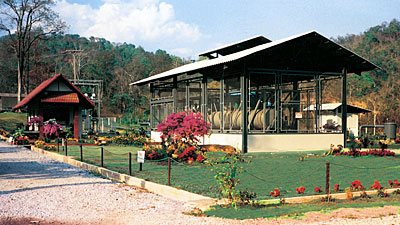Oil Field Heat
Feedsee Energy : Oil Field Heat : Electricity generation from hot water produced during the process of oilfield production
In oil production, especially with deeper wells, a significant amount of hot water is often brought to the surface along with the oil. This hot water, sometimes referred to as "produced water," can be used to generate electricity in a process similar to geothermal power generation.
 In 2007, Ormat Technologies helped the US Department of Energy validate the technology used in Geothermal and Recovered Energy Generation for the production of commercial electricity using hot water produced during the process of oil field production. The project was conducted at a DOE oil test center and used an Ormat Organic Rankine Cycle power generation system to produce commercial electricity. The test used a commercial air-cooled, skid mounted standard design Ormat Organic Rankine Cycle system. Ormat will supply the power unit at its own expense while the DOE installed and operated the facility for a year. There are two large unutilized sources of hot water at a naval petroleum reserve which produces water in excess of degrees Fahrenheit and at flow rates sufficient for generation of 200 kW. The project consited of the installation, testing, and evaluation of a binary geothermal power unit in the field near these hot water sources. The unit used in the study is similar to the 250 kW air-cooled unit that produced electricity from 210 degrees Fahrenheit geothermal water around the world. Ormat assessed the feasibility of utilizing some of eight thousand wells to support on site power generation by employing the company's factory-integrated sub-megawatt geothermal power units.
In 2007, Ormat Technologies helped the US Department of Energy validate the technology used in Geothermal and Recovered Energy Generation for the production of commercial electricity using hot water produced during the process of oil field production. The project was conducted at a DOE oil test center and used an Ormat Organic Rankine Cycle power generation system to produce commercial electricity. The test used a commercial air-cooled, skid mounted standard design Ormat Organic Rankine Cycle system. Ormat will supply the power unit at its own expense while the DOE installed and operated the facility for a year. There are two large unutilized sources of hot water at a naval petroleum reserve which produces water in excess of degrees Fahrenheit and at flow rates sufficient for generation of 200 kW. The project consited of the installation, testing, and evaluation of a binary geothermal power unit in the field near these hot water sources. The unit used in the study is similar to the 250 kW air-cooled unit that produced electricity from 210 degrees Fahrenheit geothermal water around the world. Ormat assessed the feasibility of utilizing some of eight thousand wells to support on site power generation by employing the company's factory-integrated sub-megawatt geothermal power units.
How Oil-Field Heat Could be Used
- Oil and Water Separation: When oil is pumped to the surface, it often comes mixed with water. This mixture is typically passed through a separation process, which can involve gravity separation, centrifugation, or other methods to separate the oil from the water.
- Heat Extraction: The separated hot water, which can reach high temperatures depending on the depth of the oil well, contains a significant amount of thermal energy. This heat can be harvested using a heat exchanger, where the hot produced water heats up a secondary working fluid with a lower boiling point.
- Electricity Generation: The heated working fluid turns into vapor, which is used to drive a turbine. The turbine is connected to a generator, which produces electricity as it spins. This is similar to the process used in binary cycle geothermal power plants.
- Condensation and Re-injection: After passing through the turbine, the vapor is condensed back into a liquid and recycled for another round of heat exchange. The produced water, after its heat has been extracted, can be re-injected into the oil field to maintain pressure, or it may undergo further treatment if it is to be disposed of or used in other ways.
This approach of generating electricity from the hot water produced during oil field production can help oil companies to reduce their overall carbon footprint, improve energy efficiency, and cut operational costs by generating on-site power. It's also a way to make use of a resource that might otherwise be wasted.